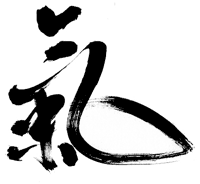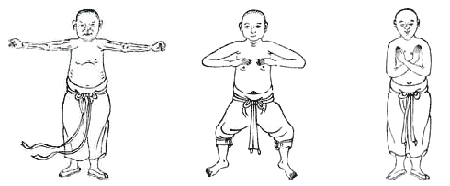|
|
|||||||||||
|
CHI KUNG |
 |
||||||||||
The Chinese word Chi, literally means “air” or “breathing”. In the studies of Chi Kung, however, it denotes much more than just the air we breath in the atmosphere. The term virtually refers to the vitality of the human body, and more specifically to the energy required to sustain the activities of its internal viscera, organs and tissues.
Essentially, there are two kinds of Chi: the Primal and the Acquired. Primal Chi is inborn and is generated by the congenital constitution of the body. The strength of the Primal Chi generated is basically determined by the constitution and the age of the individual. The Primal Chi produced inside the body of a man born with a stronger constitution and at the prime of his age is invariably stronger than that of the weak and the aged. Acquired Chi is derived through the intake of nutrition supplied by food and air. A healthier diet and a better living environment would naturally turn out a stronger Acquired Chi.
Chi Kung is the exercise devised to reinforce Primal Chi as well as to strengthen the production of Acquired Chi. The effective practice of Chi Kung would enable a merge of Primal Chi and Acquired Chi, turn them into what is called the Genuine Chi (or vital chi) and distribute it smoothly and efficiently to the body, thus ensuring proper and fortified functioning of its organs and tissues. The majority of Chi Kung exercises involves training in breathing, mind concentration, posture setting and certain auxiliary movements.
From the very beginning and up to these days, Chi King has been practiced principally as an exercise for keeping health, preventing and fighting against diseases and achieving longevity. It was first developed as a component of Chinese medicine but was gradually incorporated into certain styles of martial arts as the foundational or complementary training to strengthen and improve the physique of the practitioner.
In essence, the practice of Chi Kung emphasizes on working out both the body and the mind through regulated breathing, mental activities and postures.
Nutrition and air are the two basic requisites for the subsistence of the body. Nutrition is derived from food and drink. This goes into the bloodstream and is distributed via the circulation system to the entire body to support the functioning of the cells. Each of the cells gets its energy from the chemical breakdown and consumption of the nutrition in the blood, a process dependent essentially on oxygen, which enters the bloodstream from the lung. Hence, the respiratory system is the vital support to the circulation system. Whilst both food and air are practically of equal importance to life, breathing, in a sense, comes with priority, as a human being could probably live without food and drink for a number of days, but could not subsist without oxygen for just a few minutes. Most of the Chinese Chi Kung exercises are based on regulated breathing to direct the flow of Chi within the body. Various forms of breath regulations are practiced by different Chi Kung styles, but deep, abdominal breathing is the essential method mostly commonly followed.
Here, the Chinese word “mind”, although written as the homonym of the word “heart”, refers actually to the brain and the nervous system, which controls and regulates the conscious and unconscious activities of the bodily movements and activities. A sound, stable and relaxed brain and its associated nervous system is vital in maintaining proper and balanced functioning of the entire body. Chi Kung exercises place prime importance on relaxation of the mind to attain the utmost tranquility. Some of the most commonly adopted methods in this respect include concentration of mind will, breath reading and silent reading.
Correctly adjusted body postures are an important precondition to command smooth breathing and mind relaxation. If the body postures are not correctly established during the performance of Chi Kung exercises, it would be impossible to attain mind concentration, smooth breathing or uninterrupted flow of Chi inside the body. Some of the commonly practiced postures taken include various forms of sitting, lying and standing with coordinated limb positions.
Leung Ting.com |
|||||||||||
|
|
|||||||||||


